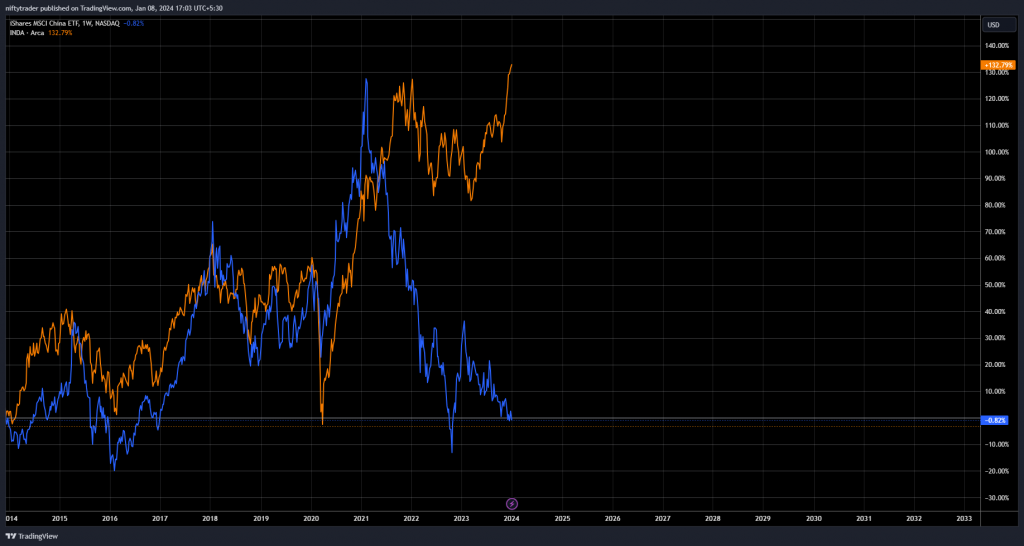
The Importance of Diversification: A Tale of Two ETFs
In the world of investing, it is essential to keep a close eye on trends and performance in different markets. By analysing data and comparing various investment options, we can make more informed decisions that will help us achieve our financial goals. In this article, I will discuss a fascinating chart that compares the performance of two ETFs – the MSCI China ETF and the MSCI India ETF – over the past decade.

The above chart plots the performance of the Chinese ETF in blue and the Indian ETF in orange over the last ten years. Upon closer inspection, one striking observation becomes evident – the Chinese ETF has had zero returns in dollar terms over the past decade. This is quite surprising considering the numerous positive narratives surrounding China’s solid growth, disciplined governance, and resilience in the face of the COVID-19 pandemic.
In contrast, the Indian ETF has experienced significant growth, with returns of 132% over the same period. While it is important to note that these returns are in dollar terms, and in rupee terms, the growth would be even higher, the divergence in performance between the two ETFs is apparent.
The divergence between the Chinese and Indian markets became particularly pronounced in mid-2021. While India’s stock market was plateauing, China’s market was on a downward trajectory. This comparison provides valuable insight into the importance of being aware of what is happening in markets outside of one’s own country. Just because certain events or trends have not occurred in India before does not mean they are impossible. Investors need to remain vigilant and prepared for potential market shifts and disruptions.
Looking ahead, it is crucial to consider the implications of the Chinese market’s stagnant performance and the potential for India to experience rapid growth followed by a market adjustment. Historical examples from Japan, Hong Kong, China, and several European countries demonstrate that such developments are not unheard of. Consequently, it is wise to exercise caution and have backup plans in place to mitigate any potential losses.
One can never predict with certainty when these shifts will occur, whether it is in five, ten, or two years. However, relying solely on equities for investment returns may not always be a prudent strategy. It is important to diversify our investment portfolios by including other asset classes and hedging against market volatility.
While equities can generate substantial returns during bullish periods, it is equally crucial to have a strategy that can navigate and mitigate losses during market downturns. A well-designed equity strategy, coupled with effective risk management, can help protect investors from adverse market movements and prevent significant financial damage.
One possible approach to minimize risk is to allocate a portion of your portfolio to alternative asset classes, such as bonds, real estate, or commodities. These assets often exhibit different performance dynamics compared to equities, providing greater diversification and potentially reducing the impact of market volatility on your overall portfolio.
Furthermore, having a well-thought-out exit strategy is essential. An exit strategy outlines when and how an investor will exit an investment. By establishing specific criteria or triggers that prompt you to exit a non performing equity position, you can protect your portfolio from significant losses. This strategy can help you proactively escape weak stocks or the broader equity market during times of market decline.

If you have any questions, please write to support@weekendinvesting.com








